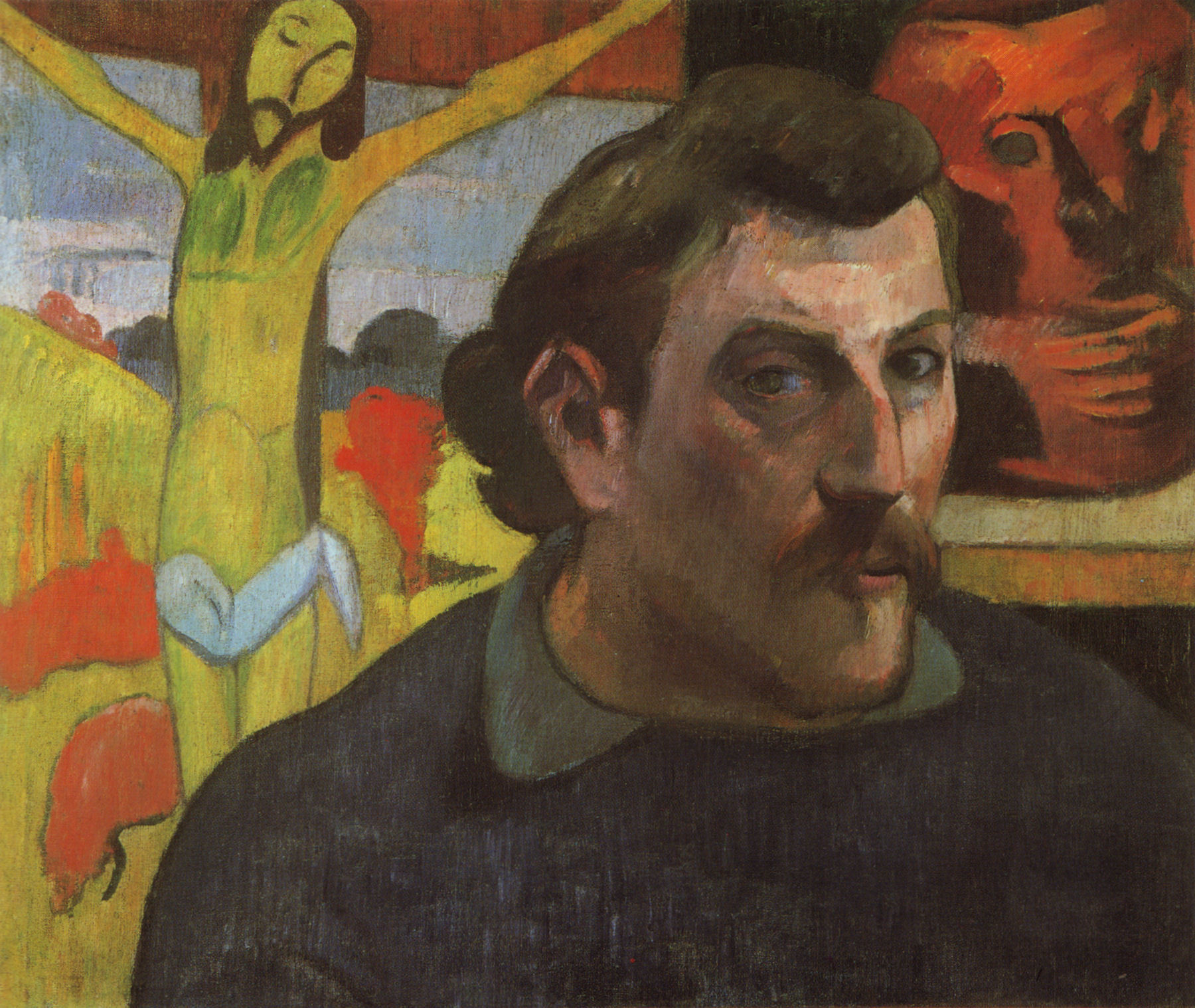Gauguin painted Fatata te miti (By the Sea) in 1892 during his first trip to Tahiti. It is an example of the relatively few straightforward genre scenes that Gauguin painted immediately after setting up his studio in a native bamboo hut at Mataiea, Papeari. Nevertheless, as Nancy Mowll Mathews, Gauguin's biographer, points out, it does not represents what he actually saw; the paintings transform the mundane and ordinary into an exoticized view of the island's life.
The painting depicts two Tahitian women, seen from behind, jumping into the sea. There is a fisherman in the background, fishing with a spear. The painting epitomizes the romantic view of Tahitians made famous by Pierre Loti's Le Mariage de Loti. In that novel, Loti described his Tahitian bride's pursuits as extremely simple, "reverie, bathing, above all bathing.” The women in the painting bathe naked, removing their pareos, apparently unbothered by the presence of the fisherman nearby. This is an image of the uninhibited tropical paradise Gauguin had hoped to find, although the reality was that Polynesian culture had been transformed by western missionaries and colonialism as they imposed their own values and religion on the people living in the islands.
The theme of nymphs frolicking in the waves was a tradition of the Golden Age repeatedly represented by artists such as Titian and Courbet through to Gauguin's own contemporary, Degas.


 Paul Gauguin
Paul Gauguin